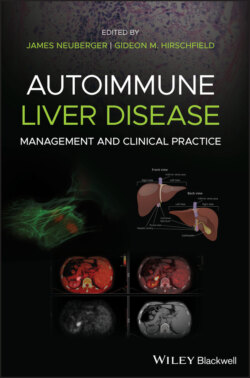Читать книгу Autoimmune Liver Disease - Группа авторов - Страница 66
Vitamin D and Sunlight Exposure
ОглавлениеIn addition to its roles in bone mineralization and calcium homeostasis, vitamin D modulates immune reactions and risk for autoimmunity [19]. Both vitamin D deficiency and genetic polymorphisms in the vitamin D receptor (VDR) increase the incidence and severity of multiple autoimmune diseases. Conversely, high vitamin D levels reduce the risk of MS. Reduction in sunlight exposure and synthesis of 1,25‐dihydroxyvitamin‐D3 (D3) might explain, in part, the strong correlation between the incidence of autoimmune disease and increasing latitude.
SNPs in two VDR genes, BsmI and TaqI, are associated with AILDs. SNPs in these genes and FokI are associated specifically with AIH. Dietary vitamin D and vitamin D synthesized in response to ultraviolet‐B radiation in sunlight determine serum vitamin D levels. Sequential hydroxylation in the liver and kidney produce D3, the most potent ligand for VDRs. Innate and adaptive immune cells express VDRs that induce multiple immunologic effects. For example, D3 regulates production of antimicrobial peptides and reactive oxygen species in innate immune cells and promotes NKT cell immunomodulatory functions. D3 also downregulates immunopathogenic CD4 Th1 and Th17 cells, while upregulating immunosuppressive CD4 Th2 cells and iTregs. By reducing Th1 secretion of IL‐2, D3 not only inhibits proliferation of CD4 and CD8 effector T cells but also generates low IL‐2 levels, favoring proliferation of functional iTregs.
